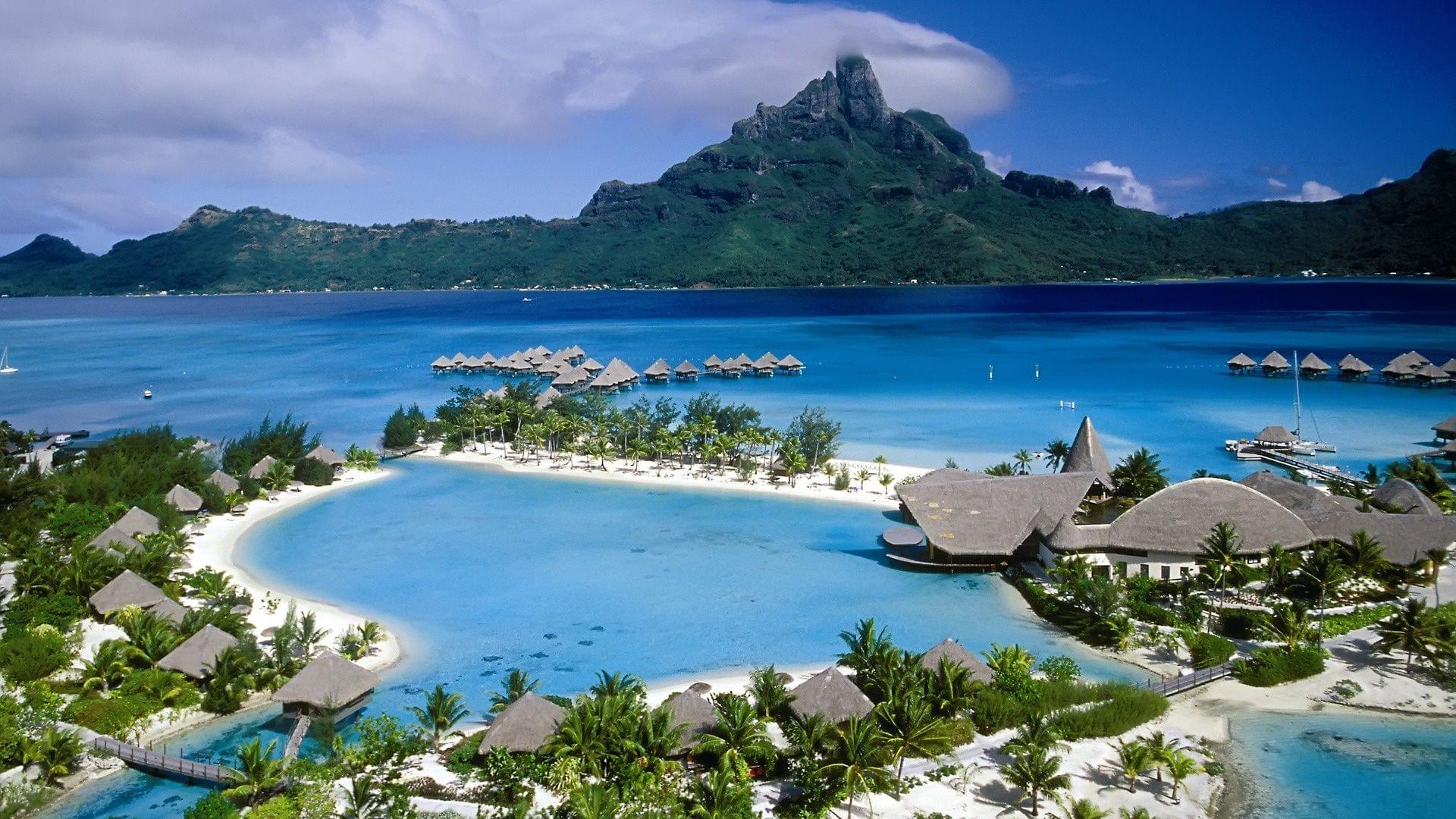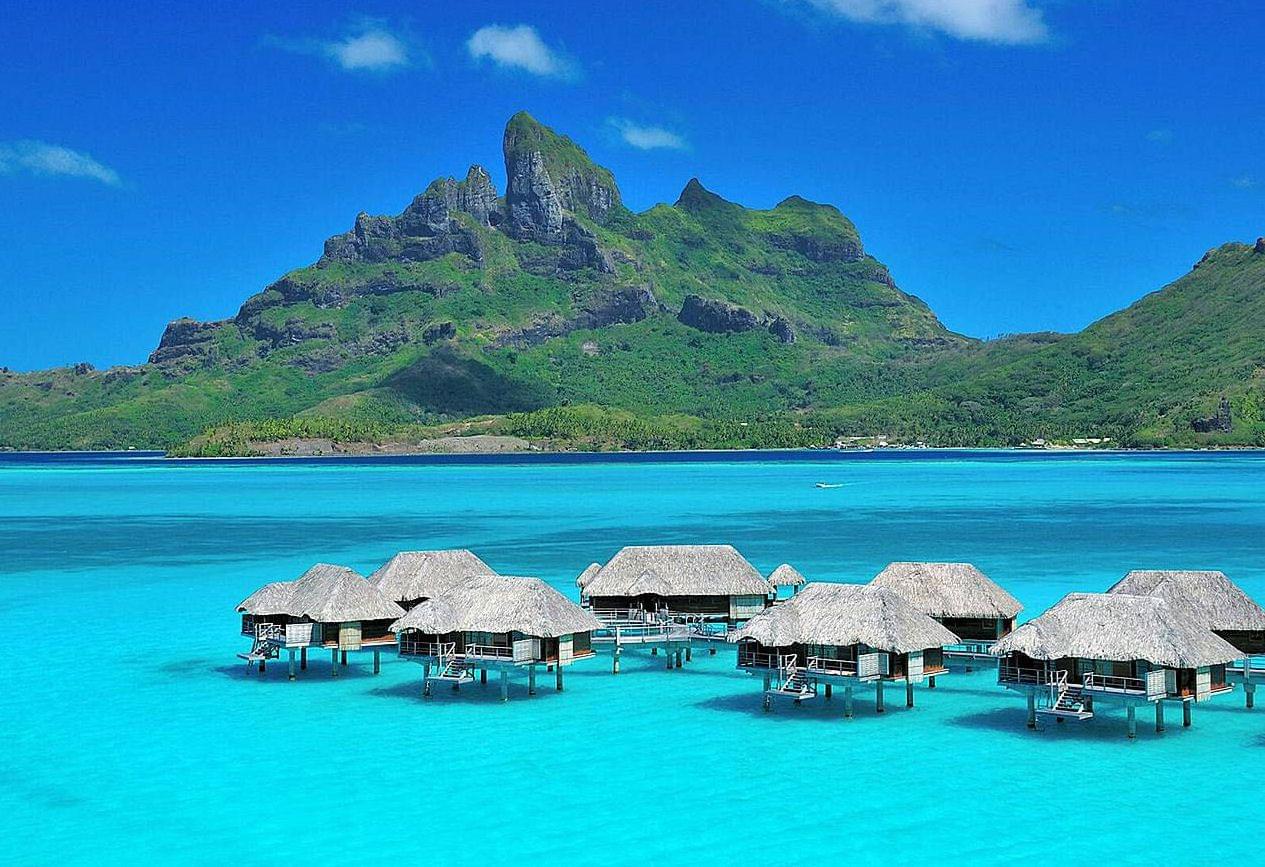
Tahiti is the largest island in the Windward Group of French Polynesia. It is located on an island in the archipelago of the islands in the middle of the southern ocean of the Pacific, and is divided into two parts: the largest of them, the northwestern part of Tahiti Noi and the smallest of them, is the southeastern part of Tahiti Iti. The island was formed through volcanic activity and mountainous heights with the presence of coral reefs. The population of about 182,645 people (in the 2012 census), making it the most densely populated island in French Polynesia, accounting for about 68.5% of its total population. Tahiti was previously known as Otaheite.
Tahiti is the economic, cultural and political center of French Polynesia. The collective capital, Pape’ete, is located on the northwestern coast with the region’s only international airport, and Fa International Airport, located 5 km (3.1 mi) from the city center.
The language
French is the only official language although Tahitian (Rio Maochi) is widely spoken by many residents. Part of the Tahiti Kingdom was annexed to France in 1880. Tahiti was settled by Polynesia in between 300 and 800 AD. Tahiti has about 70% of the island’s population with the remainder consisting of Europeans and Chinese and the rest of mixed heritage.
Geography
Tahiti is the highest and largest island in French Polynesia which is close to the island of Moorea. Tahiti stretches approximately 4,400 km (2734 mi) south of Hawaii, 7,900 km (4909 mi) from Chile and 5,700 km (3542 mi) from Australia.
The island is 45 km (28 mi) across the widest point, and covers an area of 1045 km2 (403 sq mi). The highest peak is Mont Orohena (Mou’a ‘Orohena) (2,241 meters (7,352 feet)). Mount Roonui, or Mount Ronui (Mou’a Rōnui) in the southeast of the country rises to 1,332 meters (4,370 feet). The island consists of almost two round parts which are concentrated on the volcanic mountains connected by a short isthmus named after the small town name of Taravao.
The northwestern part is known to be Tahiti Noi, while the southeastern part is much smaller than the region known as the “Little Tahiti” or “Tai’arapū”. Tahiti Nui is densely filled along the coast, especially around the capital, Papeete.
The interior of Tahiti Noi is almost uninhabited. Tahiti Yeti remained isolated, reaching the southeastern half (Te Bari) and travelers can only reach it by boat or on foot. The rest of the island was cordoned off the main road that runs between mountains and the sea.
There are stunning landscapes that characterize the inner road between past dairy farms and citrus orchards with panoramic views. A Tahitian scenery featuring lush rainforests with many currents, including the Papenoo River on the northern side.

the climate
The climate of Tahiti from November to April is characterized by the rainy season, which has a rainfall of about 340 mm in the month of January. As for August, it is the driest month with an average precipitation of about 48 mm.
The average Tahiti temperature ranges between 21 and 31 ° C (70 and 88 ° F) with little seasonal variation. The lowest and highest temperatures recorded in Bibys are 16 and 34 ° C (61 and 93 ° F), respectively.
demographics
The original Tahiti is of Polynesian origin comprising 70% of the population along with Europeans and East Asians (mostly Chinese) and mixed heritage people sometimes referred to as Demis. They constitute the largest population in French Polynesia. Most of the people from Mother France live in Papeete and its environs, especially Punaoia where they make up nearly 20% of the population.
Economy
Tourism is an important industry.
In July, the Heivā Festival is held in Papeete, which celebrates Polynesian culture. After the creation of the Provisional Electoral Council (Center de Experiment de Pacifice) in 1963, the standard of living in French Polynesia increased significantly with the abandonment of many traditional Polynesian activities and some residents migrated to the cultural center of Pape’ete. Although the standard of living has risen (mainly due to French FDI), the economy is dependent on imports. In halting CEP activities, France has signed an alliance to advance with Tahiti in compensating for the loss of financial resources and assistance in education and tourism by investing about $ 150 million a year from the beginning of 2006.
The main trading partners are France with about 40% of imports and about 25% of exports, and the other main trading partners are the United States, Japan, Australia and New Zealand.
The Tahitian pearl (black pearl) is agriculture as a large source of revenue, more than pearls that are exported to Japan, Europe and the United States. Tahiti exports vanilla, fruits, flowers, fish, coconut oil, and noni.
Unemployment affects about 13% of the active population, especially on unqualified women and youth.

the currency
The Pacific Tahitian currency of the French Franc (CFP, also known as XPF), is pegged to the euro at 1 CFP = 0.00838 EUR (about 106 CFP against the US dollar in January 2015). Hotels and financial institutions offer exchange services.
Energy and electricity
French Polynesia imports oil as it has no refinery or domestic production. The daily consumption of imported petroleum products was about 7,430 barrels per day, according to the US Energy Information Administration.

Tourism in Tahiti
There are many beaches in Tahiti that are different from around the world, but their numbers are few. Visitors often visit the beaches of Tahiti while planning their trips to Tahiti, as it is a private and unique place on a private island. Tahiti Island is a very famous island, which is known for its beauty as well as its unique features.
